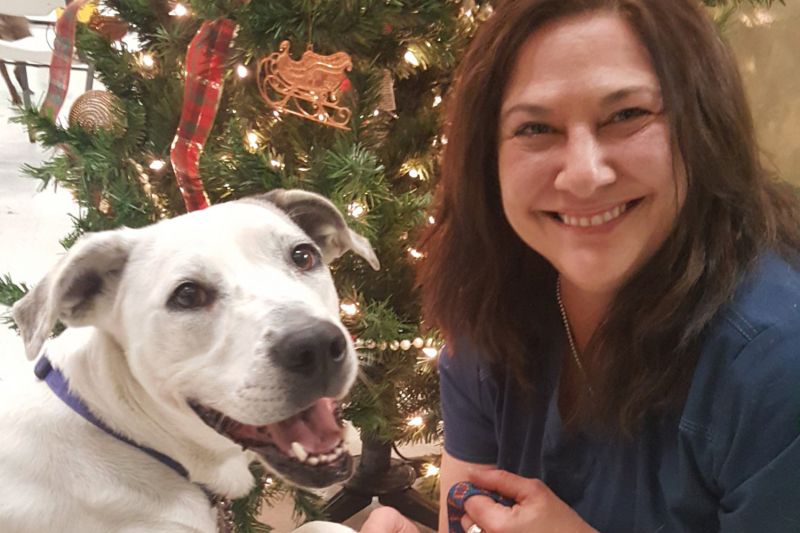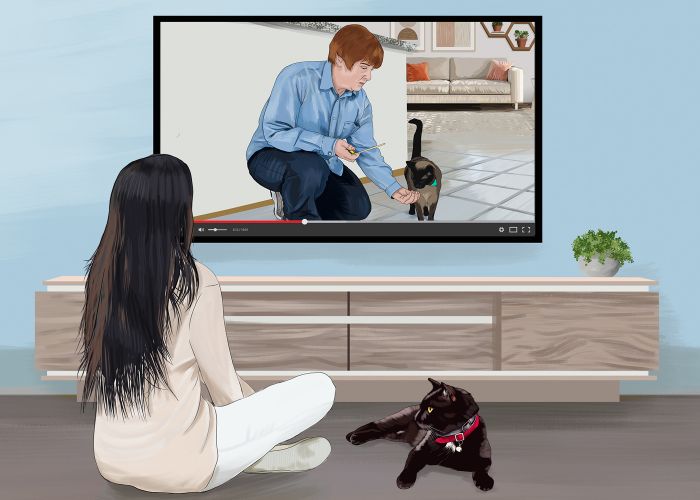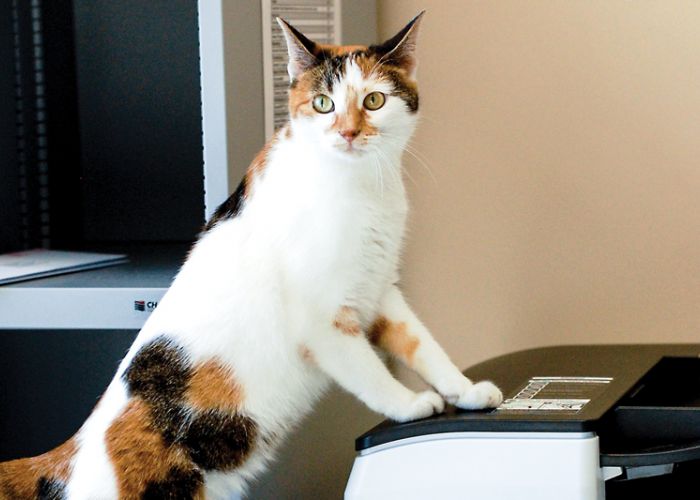More than words
Nebraska shelter offers deaf dogs a way to learn

“Who needs the most help being adopted?”
That was one of Tracie Pfeifle’s first questions when she started volunteering at the Central Nebraska Humane Society (CNHS) in Grand Island three years ago. The answer was Rosie, a deaf boxer mix who was so fearful that she would flatten to the ground if her leash brushed her back.
Pfeifle, a nurse, had no experience training dogs, but she enlisted the help of a friend with a deaf pup. They came up with commonsense hand signals—a doggie sign language—like thumbs up for “good girl” and palm down for “calm down.” Rosie quickly blossomed into a playful dog with a trademark “funny little grin.”
As with hearing dogs, positive reinforcement during training may include treats or, for the praise motivated, exaggerated facial expressions. Rosie was so eager to understand, “she actually walked backward so she could watch your face,” says Pfeifle. “It was so cute.”
Rosie was adopted by Cindy Koch, who is deaf, and her two children. Previously, Koch’s 10-year-old son had been uninterested in learning sign language. “When they got Rosie, he started to learn sign language,” says Pfeifle. Two years later, the family still visits CNHS staff, and Rosie always grins.
It’s easy to pinpoint the dogs who can’t hear because they’re the ones sleeping while their kennel mates are barking, says Pfeifle. Staff and volunteers have now used the hand signals with 12 other deaf dogs, 9 of whom have been placed as of December 2016. Other shelters and rescues sometimes call CNHS seeking training tips or placement help for their own deaf dogs, including Bella, a white Labrador mix from a small Oklahoma rescue. (For those eager to learn doggie sign language with a new companion, Bella, Diana and Pinky are still available.)
Every dog enjoys different activities, including obstacle courses and agility training, but Pfeifle tries to teach each one the same hand signals for consistency throughout the shelter—commands like “sit,” “down,” “quiet” and “roll over,” much like those taught to hearing dogs.
Deaf dogs learn something more, though. Pfeifle will hide at the shelter and encourage them to find her, offering huge praise if they do, to encourage the dogs to find their owners if they’re ever separated. She shares the hand signals and training tips with each dog’s new family, but adopters often come up with additional ways to communicate, like one adopter who flicks her back porch light to say, “Come inside!”
It takes less than 15 minutes for deaf dogs to learn “sit” and “down,” says Pfeifle. “Most of them are pretty darn smart,” she adds, and training deaf dogs is less about hand signals and more about showing emotion. “You know when someone’s happy or sad—dogs, I think, are more so that way by nature. Add the deaf part to it, and they’re even more so.”








